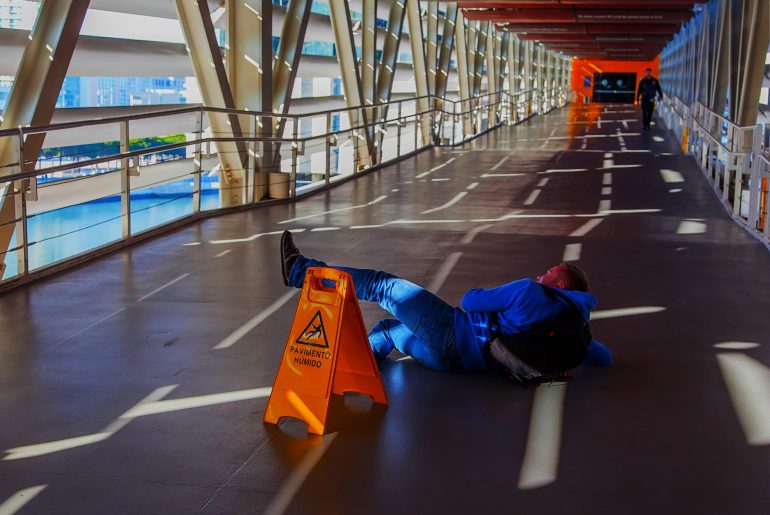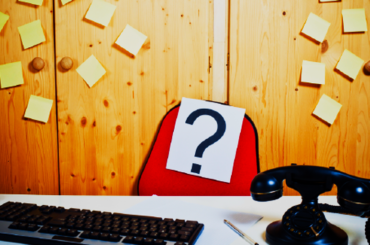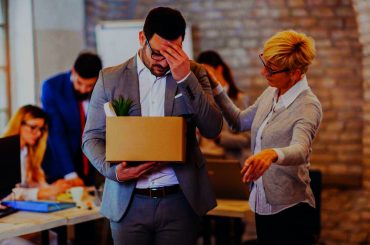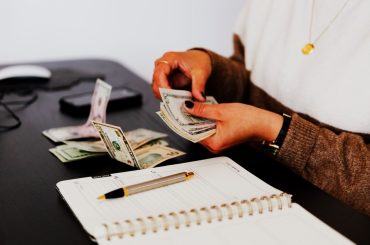Introduction to Slip and Fall Settlements
Have you ever slipped, tripped, or fallen on someone else’s property and found yourself hurt? If so, you’re not alone. Slip and fall incidents are common, but what comes after can be confusing and overwhelming. This guide aims to clear the fog around slip and fall settlements, helping you understand your rights and what you can expect if you find yourself in such a situation.
The Basics of a Slip and Fall Lawsuit
First, let’s talk about what a slip and fall lawsuit is. Imagine walking in a grocery store, and you slip on an unmarked wet floor, injuring yourself. You have the right to seek compensation for your injuries, and this is where a slip and fall lawsuit comes in. It’s a type of personal injury claim brought against the party responsible for maintaining the property where the accident occurred.
Key points in a slip and fall lawsuit include:
- Proving Negligence: You need to show that the property owner was negligent in maintaining safe conditions.
- Documenting Injuries: Medical records, bills, and documentation of any lost wages are crucial.
- Understanding the Law: The legal aspects can be complex, depending on where the accident happened and the specific circumstances.
Remember, every slip and fall case is unique, and the outcome can vary based on numerous factors, including the severity of your injury and the clarity of evidence showing negligence. Stay tuned as we delve deeper into what you can expect in terms of settlements and how to navigate your case with confidence.
Assessing Your Case: Key Considerations
When you’re caught in a slip and fall situation, there’s more to consider than just the immediate physical pain. Understanding the full extent of your case is crucial for a fair settlement. Here’s what you need to weigh in:
The Role of Economic Damages in Your Settlement
Economic damages are tangible losses you’ve suffered because of the injury. These include:
- Medical Expenses: Hospital bills, medication costs, and any future medical care related to your injury.
- Lost Income: Money you couldn’t earn because you were recovering and couldn’t work.
It’s important to collect all receipts and records related to these costs. They’ll be the backbone of your claim.
Calculating Medical Expenses and Lost Income
Calculating these damages might seem straightforward, but it’s more than just adding up bills. You need to consider:
- Future Medical Costs: If your injury requires long-term treatment, those future costs must be estimated and included.
- Lost Earning Capacity: If your injury affects your ability to work in the future, this loss must be quantified.
Don’t underestimate this part – it can significantly impact your settlement.
Understanding Non-Economic Damages
Non-economic damages are trickier to quantify. They cover the subjective, non-monetary consequences of your injury, such as:
- Pain and Suffering: The physical discomfort and emotional distress you experience.
- Loss of Enjoyment of Life: If the injury prevents you from enjoying your usual hobbies and activities.
These damages are equally important in assessing the total impact of your injury.
Estimating Pain and Suffering in Personal Injury Claims
This is perhaps the most complex part. There’s no exact formula, but factors considered include:
- Severity and Duration of Pain: Chronic and severe pain typically results in higher compensation.
- Impact on Daily Life: How the injury affects your routine, work, and family life.
Documenting your daily struggles and how the injury has changed your life is vital in making a strong case for these damages.
Navigating Legal Complexities
Understanding the legal intricacies of a slip and fall case is crucial for a successful claim. It’s not just about proving what happened, but also navigating through the maze of legal doctrines that apply to your situation.
Premises Liability: Holding Property Owners Accountable
In slip and fall cases, premises liability is a key legal concept. This doctrine holds property owners and managers responsible for injuries that occur on their property. The crux of the matter is whether the property owner:
- Knew or should have known about the hazardous condition.
- Failed to take reasonable steps to rectify the situation.
Proving these points is essential for a strong case.
The Duty of Care Explained
The duty of care is a legal obligation imposed on property owners. It requires them to maintain a safe environment for visitors. This duty varies depending on the visitor’s status:
- Invitees: Guests invited for business purposes (like customers in a store) are owed the highest duty of care.
- Licensees: Social guests fall into this category, with a moderate level of care required.
- Trespassers: Property owners owe the least duty of care to trespassers.
Comparative Negligence vs. Contributory Negligence
Your own actions play a role in determining the settlement. Here’s where comparative and contributory negligence come into play:
- Comparative Negligence: The settlement amount is reduced by your percentage of fault. For example, if you’re found 30% responsible for the accident, your compensation will be reduced by 30%.
- Contributory Negligence: In some jurisdictions, if you’re even slightly responsible for the accident, you may be barred from receiving any compensation.
How Your Own Responsibility Affects the Settlement
Your actions before, during, and after the accident are scrutinized. Did you ignore warning signs? Were you wearing inappropriate footwear? All these factors can influence the settlement outcome.
Special Cases in Slip and Fall Settlements
When a slip and fall incident escalates to a tragic outcome or involves unique circumstances, the approach to seeking settlement changes significantly.
Wrongful Death Claims: Seeking Justice After a Fatal Accident
In the unfortunate event of a fatal slip and fall, the case transforms into a wrongful death claim. These claims are filed by the victim’s relatives, seeking compensation for:
- Funeral and burial expenses.
- Lost future income and benefits the deceased would have provided.
- Loss of companionship and emotional support.
The emotional stakes are high, and these cases often carry a greater financial impact.
Compensation for the Victim’s Loved Ones
In wrongful death cases, compensation isn’t just about the financial loss. It’s also about recognizing the emotional toll on the family. Courts often consider factors like:
- The relationship between the claimant and the deceased.
- The financial dependency of the claimant on the deceased.
Gathering Evidence to Support Your Claim
Building a strong case requires solid evidence. This holds true for both injury and wrongful death claims in slip and fall incidents.
Documenting the Scene: Importance of Photographs and Videos
Visual evidence can be compelling. Photographs and videos of the scene can:
- Show the hazardous condition that caused the fall.
- Provide a timestamp and location reference.
- Often speak louder than words in proving negligence.
Witness Statements and Their Role in Strengthening Your Case
If there were eyewitnesses, their accounts could be invaluable. Witnesses can:
- Corroborate your version of the events.
- Offer a neutral perspective on the incident.
- Help establish the timeline and severity of the situation.
Incident Reports and Their Impact on Your Claim
If the incident occurred in a business or public space, an official incident report might exist. These reports:
- Provide an immediate record of the incident.
- Might contain crucial details like conditions leading to the fall and immediate actions taken.
Maximizing Your Settlement
Achieving the best possible outcome in a slip and fall case involves strategic planning and understanding the legal nuances. Here’s how you can maximize your settlement.
The Importance of a Skilled Personal Injury Lawyer
Having an experienced attorney is key. A skilled lawyer can:
- Navigate complex legal procedures.
- Accurately calculate the full extent of your damages.
- Negotiate effectively with insurance companies and opposing counsel.
Choosing the Right Representation for Your Case
Selecting the right lawyer is crucial. Consider:
- Experience: Look for a lawyer with a track record in slip and fall cases.
- Communication: Choose someone who communicates clearly and keeps you informed.
- Reputation: Research their reputation in the legal community and among past clients.
Legal Damages and How to Maximize Them
Maximizing legal damages involves:
- Detailed documentation of all expenses and impacts.
- Understanding the full scope of future damages, like ongoing medical care.
- Presenting a compelling case for non-economic damages like pain and suffering.
Strategies for a Successful Personal Injury Claim
Effective strategies include:
- Gathering comprehensive evidence.
- Being prepared to counter defense strategies.
- Staying informed and engaged throughout the legal process.
Understanding the Settlement Process
Navigating the settlement process requires patience and a strategic approach.
Negotiating with Insurance Companies: Tips for a Fair Settlement
When dealing with insurers, remember:
- They often start with a low offer.
- Your lawyer should handle negotiations to avoid being undervalued.
- Be prepared to provide strong evidence to justify your claim.
The Timeline of a Slip and Fall Settlement: What to Expect
The timeline can vary widely, but generally:
- Initial investigation and evidence gathering take a few months.
- Negotiations might last several weeks to months.
- Patience is crucial; rushing can lead to a lower settlement.
The Pros and Cons of Settling Out of Court vs. Going to Trial
- Settling Out of Court: Often quicker and less expensive. Offers a guaranteed outcome but might result in a lower settlement.
- Going to Trial: Potentially higher compensation but involves more risk, time, and expense. The outcome is uncertain.
Comparative Analysis of Slip and Fall Settlements
Understanding the variability in settlement amounts across different slip and fall cases can provide valuable insights for anyone navigating this legal landscape.
Analyzing Typical Settlement Amounts for Different Types of Slip and Fall Cases
Settlements can vary significantly, and here’s a quick look at the typical ranges:
- Minor Injuries (e.g., bruises, sprains): Settlements often range from a few thousand dollars to $10,000.
- Moderate Injuries (e.g., fractures, moderate concussions): These can fetch between $10,000 to $50,000.
- Severe Injuries (e.g., spinal injuries, traumatic brain injuries): Settlements can soar well above $100,000.
Factors That Affect Settlement Variability: Location, Severity, and Liability
Several factors influence settlement amounts:
- Location: Different states have varying laws that can affect settlement outcomes.
- Severity of Injury: More severe injuries typically result in higher settlements.
- Liability: Clearer liability on the property owner’s part can lead to higher settlements.
Interactive Checklist: Steps to Take After a Slip and Fall Accident
Having a plan can make a significant difference in the outcome of your case.
Immediate Actions: Seeking Medical Attention and Reporting the Incident
- Seek Medical Attention: Even if injuries seem minor, get checked. This also provides a medical record.
- Report the Incident: Notify the property owner or manager immediately. Request a copy of the incident report if one is made.
Documenting the Scene: Using Our Comprehensive Checklist to Gather Vital Evidence
- Take Photos and Videos: Capture different angles of where the fall happened and any contributing factors.
- Note the Conditions: Weather, lighting, and any obstacles or hazards.
- Gather Contact Information of Witnesses: Their statements could be crucial.
- Retain Clothing and Footwear: These can sometimes be evidence of the conditions you faced.
Data Visualization: Trends in Slip and Fall Settlements
Visual data can provide a clearer understanding of the landscape of slip and fall settlements.
Infographic: Average Settlement Amounts Across Various Slip and Fall Scenarios
- Visual Breakdown: An infographic showing average settlements for different injury types and scenarios.
- Comparative Analysis: See how different factors like location and property type influence settlement amounts.
Charting the Settlement Process: From Filing to Resolution
- Timeline Visualization: A flowchart detailing the typical steps from the initial filing of a claim to the final resolution.
- Key Milestones: Highlighting important stages such as evidence gathering, negotiation, and potential court proceedings.
Recent Legal Precedents and Their Impact on Slip and Fall Cases
Staying updated with recent legal developments is crucial for understanding how they might affect future cases.
Landmark Slip and Fall Settlements: Lessons Learned
- Case Studies: Review of significant slip and fall cases and their outcomes.
- Key Takeaways: Insights gained from these precedents that can inform current cases.
Changes in Slip and Fall Laws: How They May Affect Your Case
- Legal Updates: Overview of any recent changes in laws or regulations related to premises liability.
- Impact Analysis: How these changes could influence the approach and outcome of slip and fall settlements.
The Emotional Impact of a Slip and Fall Accident
The aftermath of a slip and fall accident isn’t just physical.
Coping with the Aftermath: Mental and Emotional Challenges
- Personal Stories: Sharing experiences of individuals on their emotional recovery journey.
- Mental Health Implications: Exploring common psychological effects like anxiety and PTSD.
Seeking Support: The Role of Counseling and Therapy in Recovery
- Therapy Options: Discussing different types of counseling and therapy beneficial post-accident.
- Importance of Emotional Healing: Emphasizing the role of mental health in overall recovery.
The Role of Expert Witnesses in Slip and Fall Cases
Expert witnesses can be pivotal in the outcome of a slip and fall case.
Understanding the Importance of Expert Testimony
- Expert Insights: How expert opinions can strengthen a case.
- Influence on Settlements: The impact expert testimony can have on the settlement amount.
Types of Experts: Medical Professionals, Engineers, and Other Specialists
- Diverse Expertise: Profiles of different types of experts commonly involved in these cases.
- Role in Case Building: How each type of expert contributes to building a strong case.
Conclusion
Navigating Your Slip and Fall Settlement with Confidence
- Empowerment Through Knowledge: Summarizing key points for a confident approach to slip and fall settlements.
- Final Tips: Parting advice to ensure readers are well-equipped to handle their slip and fall cases.




